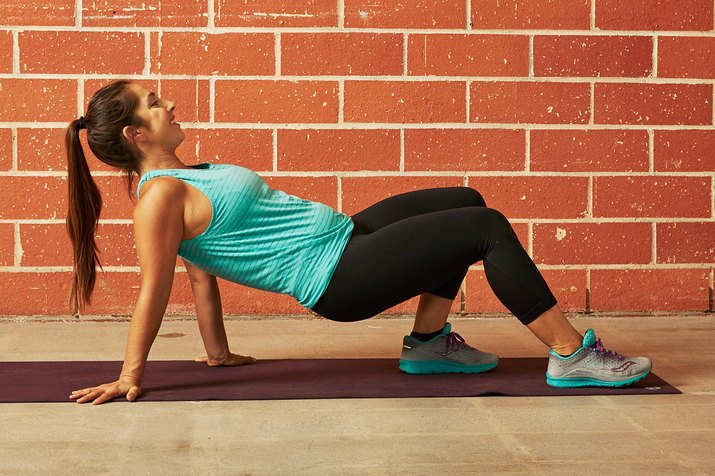
Overview
Exercise is one of the best things you can do not just for your body, but also for your brain too. Biologist and educator Carla Hannaford, Ph.D., writes in her book "Smart Moves: Why Learning Is Not All in Your Head," "The more you use the body-mind system, the more it will grow." Think of movement as a way to code your nerve networks. A variety of exercises that present unique challenges will code your body and brain for high-level functionality. Which means that by providing your body and brain with new information, you're upgrading yourself! Here are some of the best.

1. Wrist Flexion Raise
Think of all the amazing things your hands do: grip, write, tie your shoelaces, perhaps play the piano or climb up the side of a mountain. Improving hand dexterity improves the neural networks in the brain that control these fine motor skills. And grip strength is important too. A 2015 study published in The Lancet found that a strong grip can mean a healthy heart.
HOW TO DO IT: Start in a kneeling position with your hands flat on the floor, fingers spread wide. Lift your palm and thumb off the floor, but keep the base of your first knuckle of the other fingers on the floor as you flex your wrist. Slowly lower down. Perform 20 repetitions.
Listen now: How to Calm Down in Under 3 Minutes
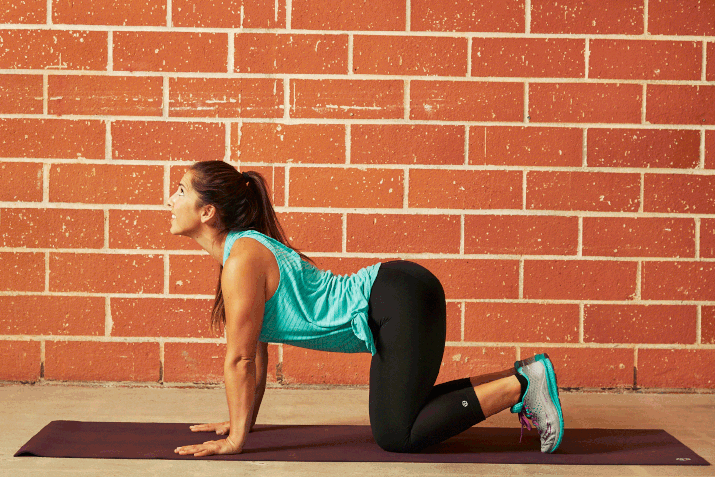
2. Segmental Cat-Cow
The human spine consists of 24 articulating joints. The health of those joints is reliant on movement, since cartilage has no direct blood supply. And a mobile, healthy spine ensures that information is sent effectively from your brain to your body and vice versa.
HOW TO DO IT: Start on all fours with your knees under your hips and your hands under your shoulders. Draw your navel in toward your spine and arch your back like a cat. Starting at your tailbone, begin to extend your spine, vertebrae by vertebrae, until you are in a swayback position. Then reverse and articulate the spine back into flexion. Go very slowly, noticing which segments feel stuck. Work with this move for at least two to four minutes in a focused manner.
Read more: 11 Essential Yoga Poses Everyone Should Practice
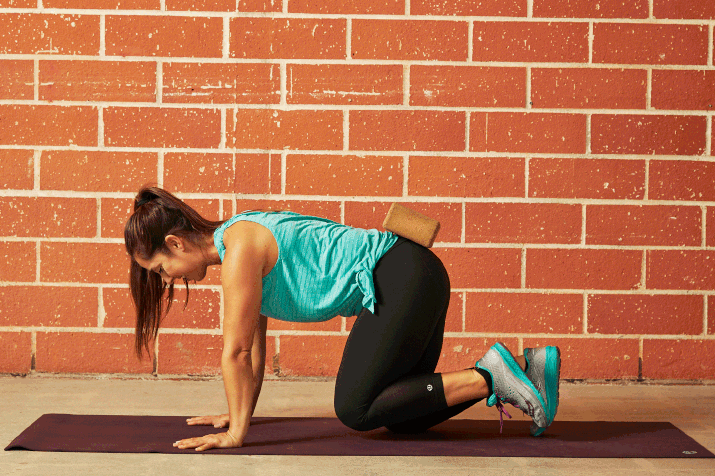
3. Block-Balance Hip Rotation
Proprioception is like your sixth sense. It's your perception of movement and body positioning as your joints and tissues provide feedback to your brain and help you maintain balance. This move targets the hip joint for greater mobility and control of movement. It's an excellent move to do after sitting at a desk for prolonged periods of time.
HOW TO DO IT: Starting on all fours with your knees hip-distance apart and your hands shoulder-width apart, place a yoga block on your lower back. Keeping your knee bent at a 90-degree angle and your foot flexed, lift your knee out to the side. Engage the tissue around your hip joint as you slowly begin to circle the leg at the hip while keeping your pelvis stable. Squeeze your glutes and draw your heel toward your buttocks. Perform three rotations in each direction per leg.
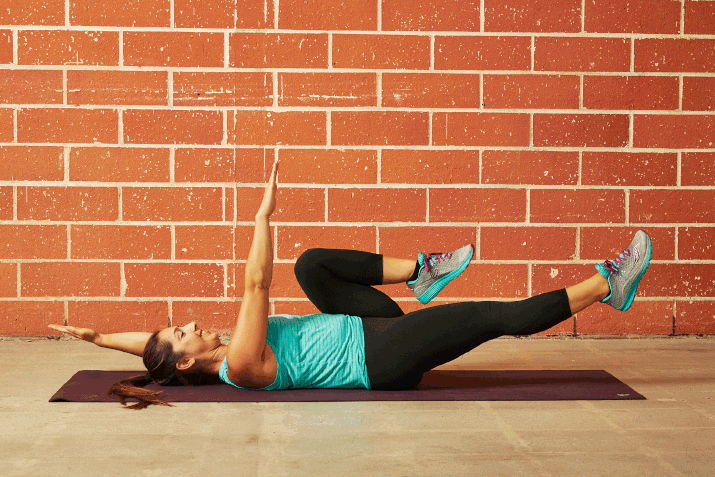
4. Dead Bug
Could targeting your core help you handle stress better? According to 2016 research from the University of Pittsburgh, yes! Postural exercises, coordination and balance moves can improve how you deal with stressors by enhancing your brain-body connection. The stronger your neural connections are, the better you're able to deal with stressful situations in a constructive way.
HOW TO DO IT: Lie on your back with your head down, your arms and legs up toward the ceiling and your knees bent. Draw your navel in toward your spine and minimize the space between your lower back and floor. Keep your core engaged as you lower your right leg and left arm toward the floor (hovering but not touching). Keeping your arm and leg straight, return to center and switch sides. Complete 10 repetitions per side.
Read more: 10 Best Exercises You Never Heard Of
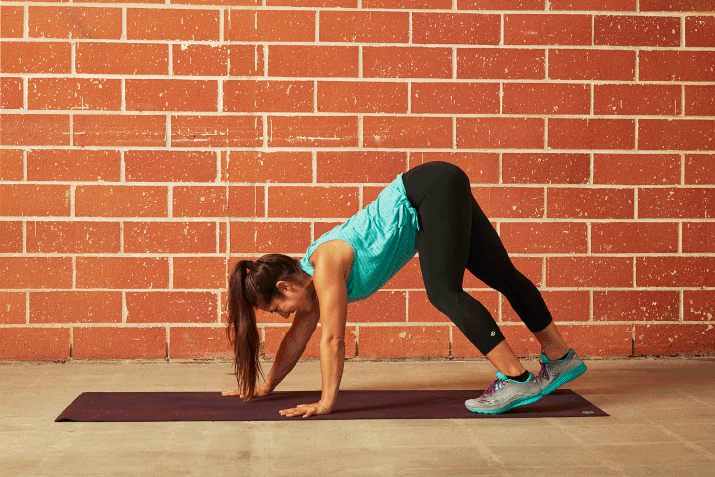
5. Bear Crawl
As soon as a baby begins to crawl, it learns how to step forward with its right knee and left arm and vice versa. This movement strengthens the signals from left to right hemispheres of the brain. So, as an adult, go back to the basics and take baby steps toward better movement with crawling.
HOW TO DO IT: Starting in a downward-facing dog, look about six inches forward at a point between your hands. Step your right hand forward as you step your left foot forward. Repeat on the other side as you "walk" forward. For an extra challenge try it backward! Perform two minutes moving forward and two minutes moving backward.
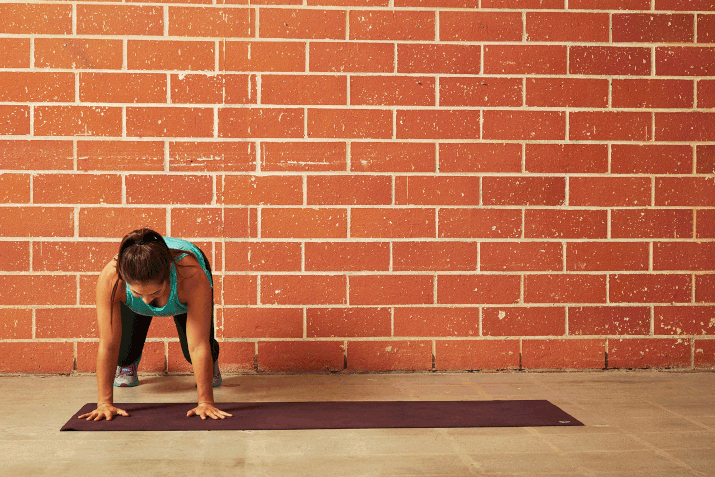
6. Lateral Tabletop Crawl
For the next few moves, you'll be working on primal movements that get you moving and thinking outside the box. Challenging your cerebellum — located at the back of the brain — with coordination and balance exercises can also have a positive effect on your ability to make decisions.
HOW TO DO IT: Start on all fours with your shoulders and hips level. Draw your navel in toward your spine and lift your knees about one to two inches off the floor. Maintain this position as you step your right foot to the right. Shift your weight into your right hand as you cross your left arm over your right. Step the right hand to the right. Keep repeating this for four to five paces, and then perform going to the left. Complete three to four rounds.
Read more: Is Your Core as Strong as a Toddler's?

7. Crab Crawl
This exercise is fantastic for improving shoulder strength and activating your hamstrings and glutes. It also challenges your coordination, which can improve your thought organization and processing speed as well.
HOW TO DO IT: Sit with your legs hip-distance apart and slightly bent. Lean back and place your hands behind your hips. Keep your fingers turned out to the side or pointing away from you. Press into your heels and hands as you lift your hips off the floor. Step your left foot and right hand forward, and then switch as you move forward. Perform this move for 30 seconds going forward and 30 seconds going backward.
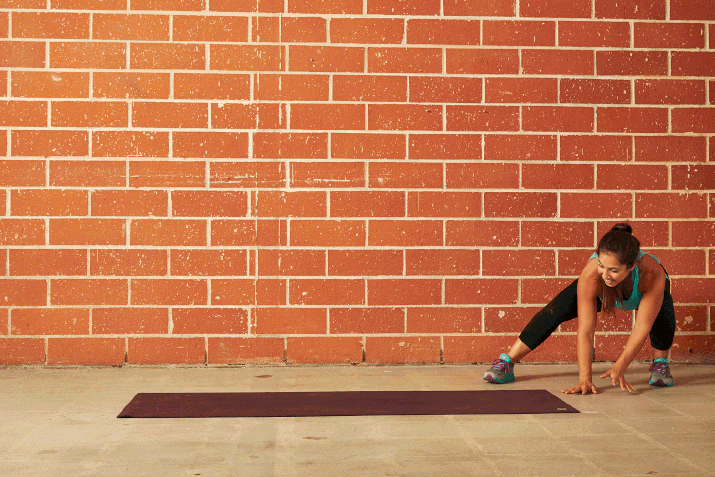
8. Ape Walk
This move may feel a little silly. But have no shame! This is an excellent locomotion drill (aka the ability to move from one place to another) that forces your brain to focus on a strange movement pattern instead of mindlessly running through a steady-state exercise.
HOW TO DO IT: Starting in a deep squat, lean forward and place your hands on the floor about one foot to the right. Shift your weight into your hands and as lightly as possible, jump your feet over to the right, landing back in a deep squat. Repeat for four to five paces to the right, and then repeat the movement to the left.
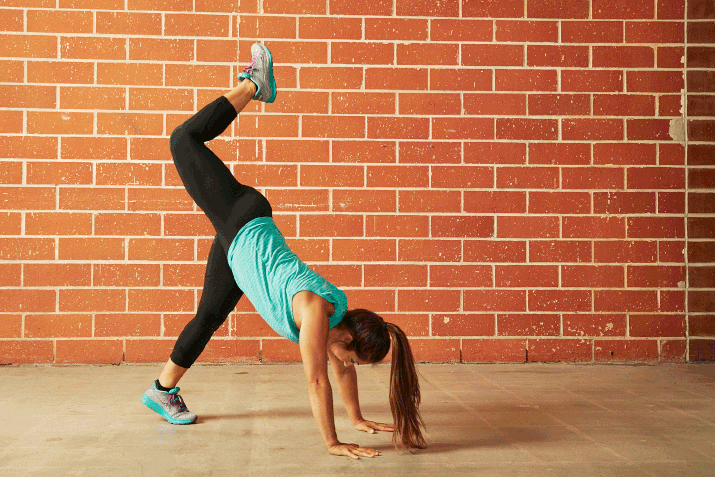
9. Scorpion Flip
This move is like a dance. You must learn each step slowly and practice awareness and control before you can find fluidity in the exercise. The mere act of learning how to put this move together is beneficial for brain and body. If your spine or hips are feeling stiff, you may want to hold off on this move until you improve your mobility.
HOW TO DO IT: Start in downward-facing dog and lift your left leg, bending the knee to 90 degrees. With control, bring the foot to the floor behind you as you rotate your torso and land in a crab position. Lift your right arm and reach to the left as you begin to lift your right leg up and over, landing in the start position. Complete three repetitions on both sides.
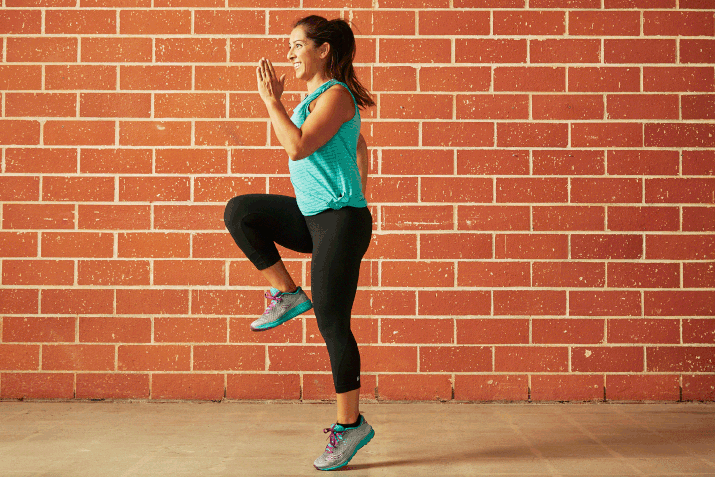
10. Skipping
Breaking a sweat with cardio exercise can do a whole lot more than just burn all those extra calories from an overindulgent dinner last night. A 2014 study in the British Journal of Sports Medicine found that aerobic training significantly increases the size of the hippocampus, the area of the brain responsible for learning and memory.
HOW TO DO IT: Draw one knee toward your chest as you simultaneously drive the opposite arm forward with your elbow bent at 90 degrees. Push off the ground and propel yourself upward and forward. As soon as the front foot lands on the ground, quickly repeat the motion on the other side. Aim to get as much height and distance as possible. Perform this move for one minute.
Read more: A Fat-Blasting Jump Rope Workout You Can Travel With
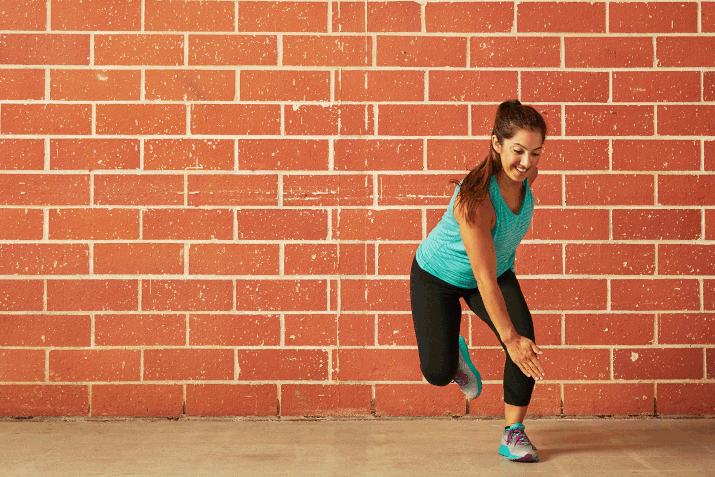
11. Speed Skater
People primarily move forward (walking and running). This move challenges you to move from side to side as well as in the transverse plane as you rotate your torso to reach for the opposite foot. The balance and coordination required in this move strengthens the nerve-cell pathways between both sides of the brain.
HOW TO DO IT: Starting with your feet together, jump to the right, keeping a slight bend in the knee. With your opposite arm, reach toward your knee or foot as the opposite leg comes back behind you and hovers above the floor. Alternate back and forth for one to three minutes.
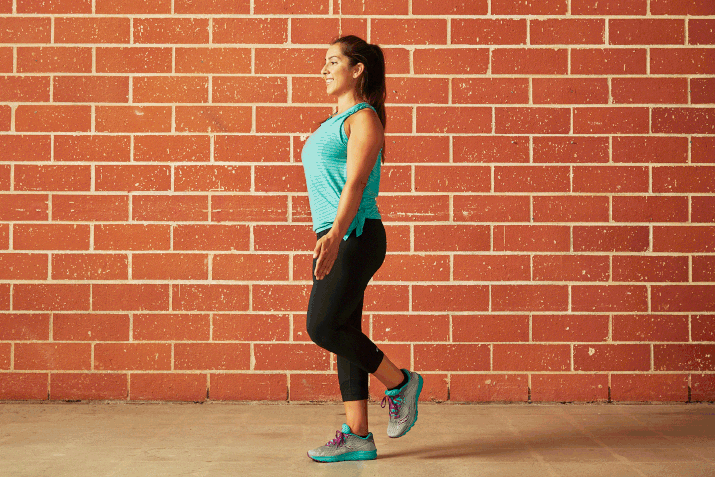
12. Single-Leg Good Morning
Strength training — even just lifting your own body weight — builds muscle, but it can also build brain power. Resistance training has been found to improve memory, improve executive functioning, reduce anxiety and may even lessen depression.
HOW TO DO IT: Stand tall. Shift your weight to one leg. Lift your other leg off the floor by bending at the knee. Keep a slight bend in your supporting leg as you flex at your hips to hinge forward. Extend your spine and keep your core tight while maintaining the natural curve of the spine. Drive through your heel and contract your glutes to return to standing. Complete eight to 10 repetitions on each leg.
Read more: 8 Unilateral Exercises to Challenge Your Balance
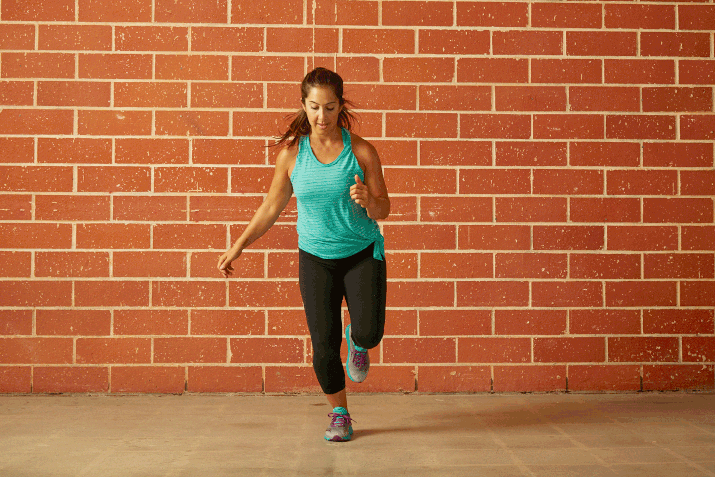
13. Single-Leg Compass Jump
This move is a double whammy: Getting your heart rate up can increase your brain cell count, while coordination drills help to reinforce and strengthen the connection between the cells. A strong connection means improved brain function and learning capabilities.
HOW TO DO IT: Staying on one leg throughout the entire drill, jump forward, backward, right and left, always passing through the center. Switch legs and repeat for a total of three to five sets.
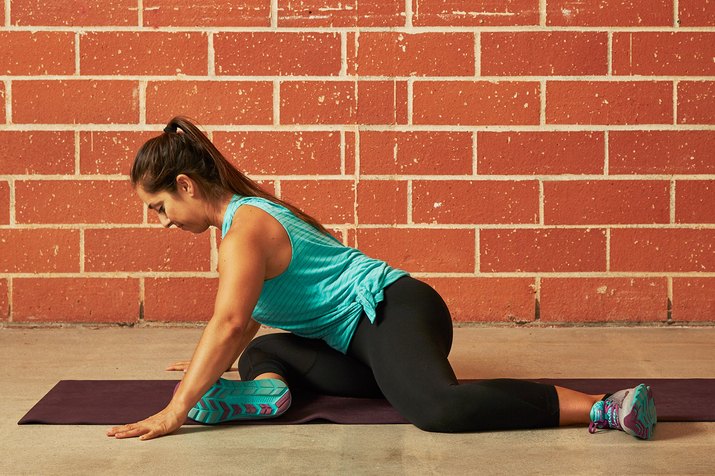
14. 90/90 Base Position
The hips tend to be a tight spot for many people. If you want to open them up, try some active stretching. The more parts of your body you can actively control, the more neural networks you form and the more intelligent your brain and body become.
HOW TO DO IT: Sit upright and form 90-degree angles on the floor with both legs. Facing the lead leg, extend your spine and lean forward. Hover your navel over your knee and keep the chest lifted to feel a deep stretch in the hip. Hold this stretch passively for two minutes. Then actively press your leg into the floor for 30 seconds. Keeping your spine extended, sink deeper into the stretch if possible. Repeat this cycle two to three times.
Read more: 8 Stretching Mistakes That Are Hurting Your Workout
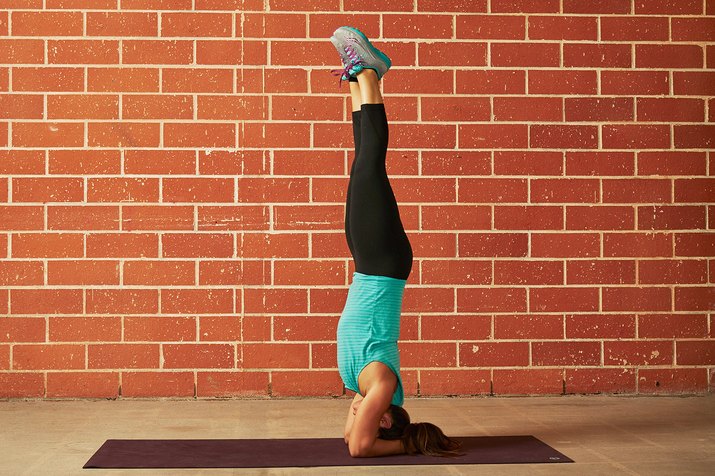
15. Headstand
In the yoga tradition it is said that the headstand is the king of all asanas. In "The Path to Holistic Health," B.K.S. Iyengar says that "the inversion brings a rejuvenating supply of blood to the brain cells" and can increase clarity of thought, concentration and sharpen memory.
HOW TO DO IT: If you're just beginning a headstand practice, get help from a yoga teacher and master the form before attempting on your own. Start against a wall. Begin kneeling with your forearms down on the ground and your fingers interlaced to form a cup with your hands. Place the crown of your head on the floor so that the back of the head touches your cupped hands. Push up onto the balls of your feet and straighten your legs so you stack your shoulders and hips. Bring your knees toward your chest and lift your legs upward. Aim to hold this position for 25 breaths.
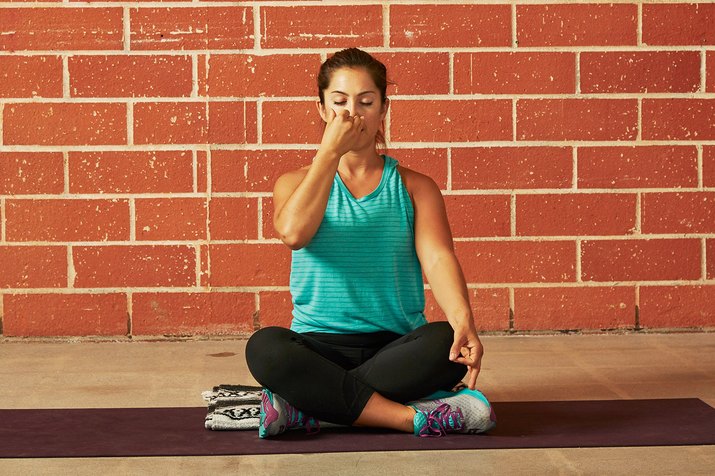
16. Alternate-Nostril Breathing
When we are under stress, the body releases stress hormones adrenaline and cortisol, which inhibit and destroy new nerve cell growth and development. A 2008 Nepalese study found that a regular practice of anulom-vilom (also known as alternate-nostril breathing) has been shown to decrease the impacts of chronic stress.
HOW TO DO IT: Sit on the floor with legs crossed at your shins. With your right hand, curl the index and middle finger in toward your palm. Extend the thumb and keep the ring and pinkie finger together. Place your thumb on your right nostril and apply pressure to close the right nostril. Breathe in through your left nostril. Exhale through the right nostril as you close the left nostril with your ring finger. Repeat for five to 20 minutes, focusing on your breathing.
Read more: 8 Easy Mindful-Meditation Techniques
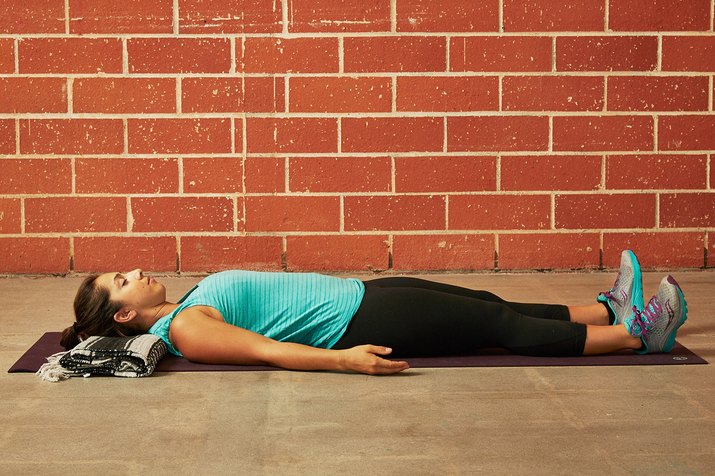
17. Savasana
A 2005 study published in the journal Neuroreport found that a regular meditation practice may slow age-related thinning of the frontal cortex, the area of the brain associated with problem-solving. Savasana helps you become more aware and keep the mind calm and focused while relaxing the body and letting go of unnecessary tension.
HOW TO DO IT: Lie on your back and extend your legs. Allow your feet to turn out and your arms to rest by your sides with your palms facing up. You can place a folded or rolled-up blanket under your neck and under your knees for support, if you prefer. Relax into the pose for five to 10 minutes.
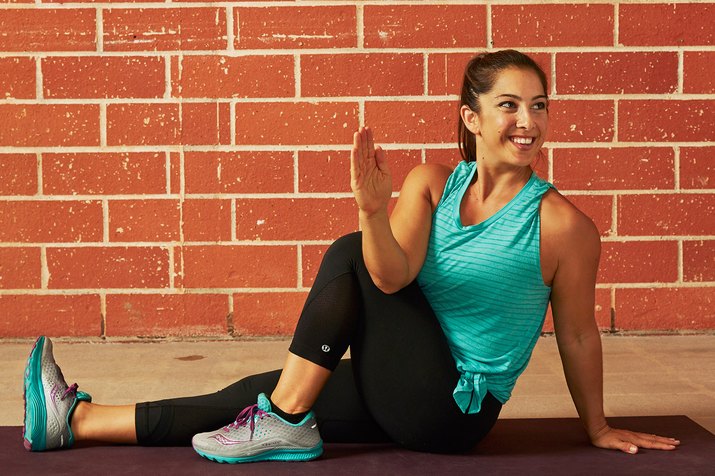
What Do YOU Think?
Are you ready to give your brain and body a boost by trying this workout? Are there any other ways you like to challenge your mind and body through physical activities like dance, rock climbing or tennis? Has challenging your body with physical exercise helped you tackle mental challenges too? We would love to hear from you! Share your thoughts, suggestions and questions in the comments below.
Video of the Day
Video of the Day